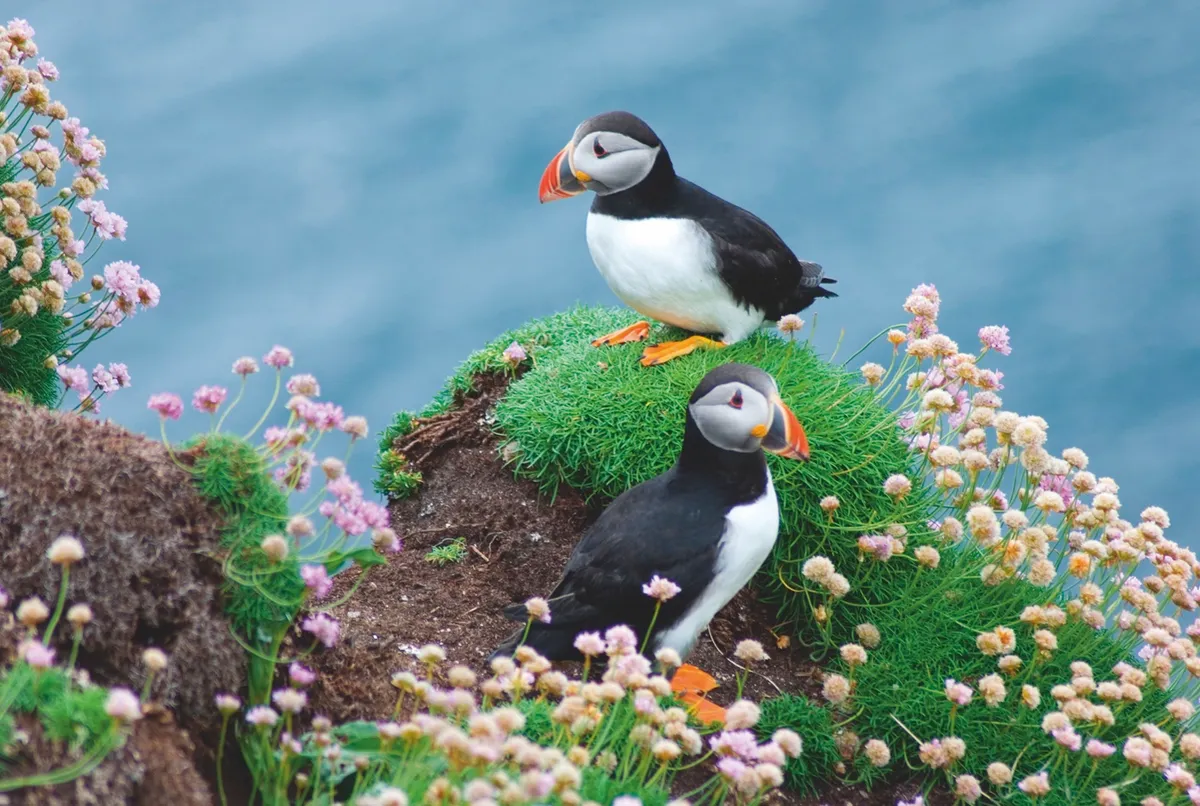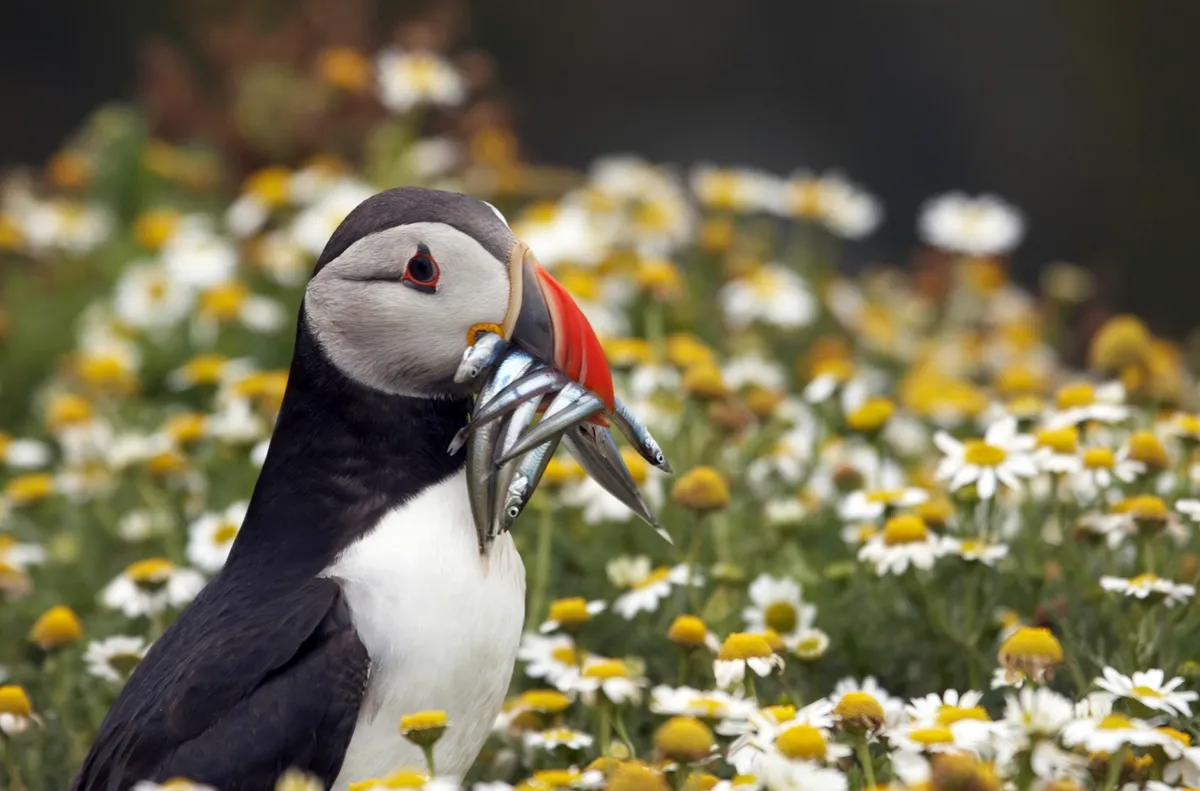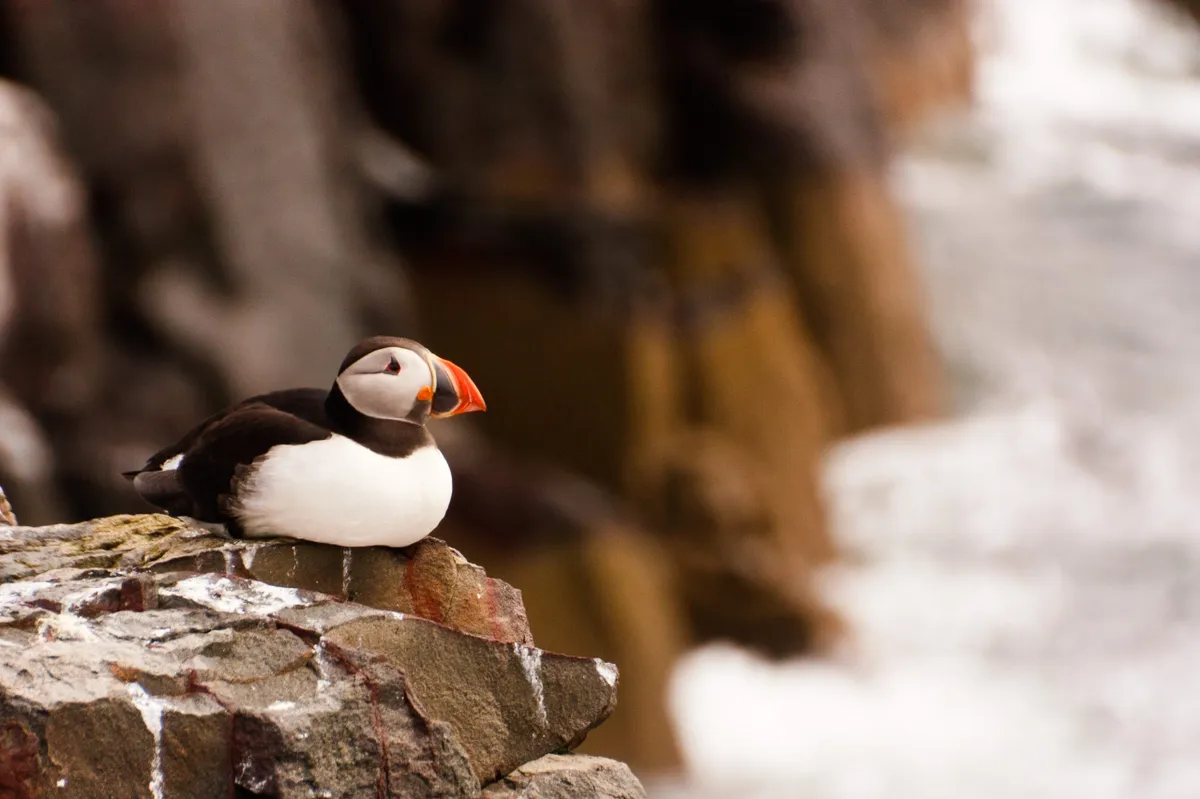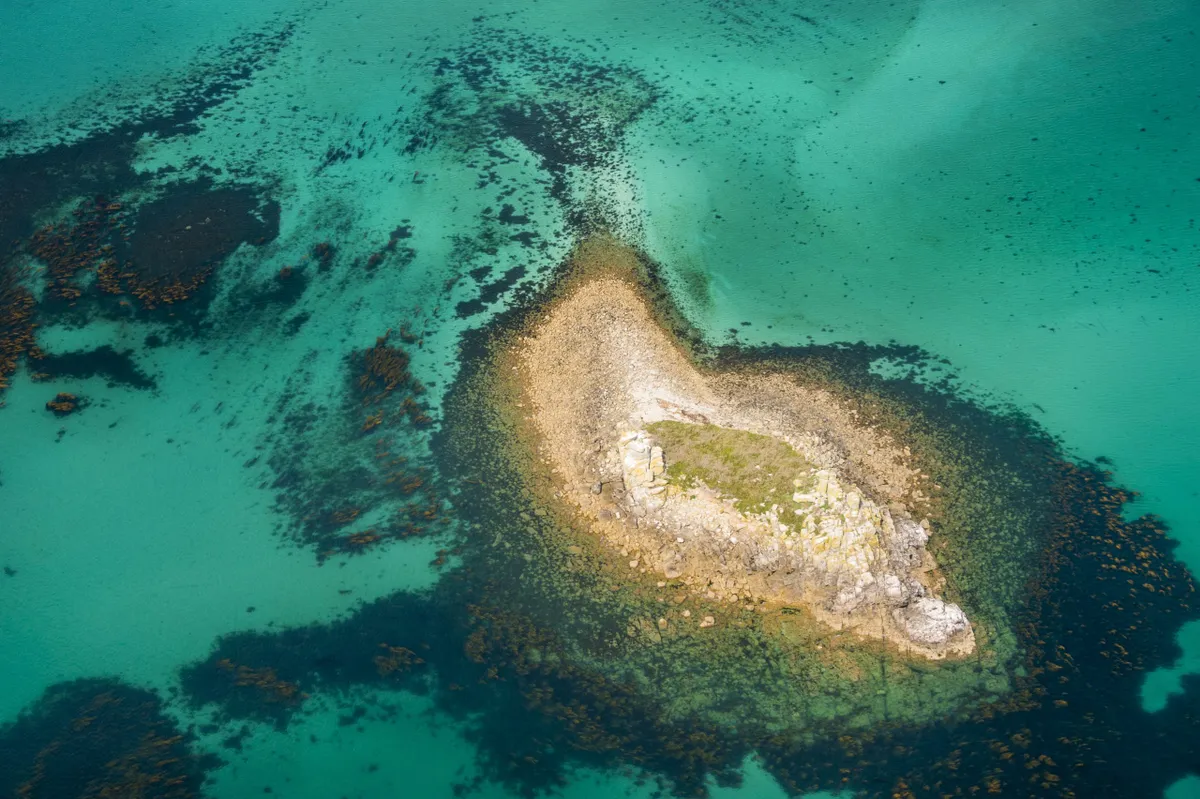The Atlantic puffin (Fratercula arctica), also known as the common puffin, is a species of seabird that belongs to the auk family and lives on coastal islands off the UK shore during breeding season. Their characterful features and colourful beak have led the puffin to gain the nicknames 'the sea parrot' or 'clown of the sea'.
Our expert guide takes a closer look at these fascinating seabirds, delving into their characteristics, diet, migration, breeding habits and the best places to see the Atlantic puffin in the UK.
Learn more about other seabird species, plus other coastal species such as dolphins and whales and seals. We also reveal Britain's best coastal arches, caves and stacks and spectacular coastal walks around the UK.
How many species of puffin are there?
There are four species of puffin in the world: the Atlantic Puffin, horned Puffin, tufted puffin and rhinoceros auklet. It is the Atlantic puffin, which has the scientific name Fratercula arctica, that is found in the UK.
How to identify puffins
The Atlantic puffin is an easily identified seabird thanks to their distinctive black back, pale chest, round white cheeks, orange legs, and red, yellow and black bill.
How big are puffins?
Puffins are surprisingly tiny! Weighing about 500 grams and 18cm in height on average. Yet despite their size, puffins are a tough and determined species, thriving in the most challenging weather conditions.

How many puffins live in the UK?
There are around 580,000 pairs of Atlantic puffin living in the UK. They arrive here in spring, settling on islands and cliff tops around our coast to breed.

When is the puffin breeding season?
In spring and summer thousands of puffins gather in colonies on the coast and North Atlantic Ocean to breed.
Each year, puffins lay an average of one egg, usually staying with the same mate throughout their lifetimes. Puffins build burrows in rocky cliffs, or on the solid ground between rocks. Burrows are located three feet under the ground.
How long do puffins live?
Puffins can live to up 25 years in the wild.
What do puffins eat?
Puffins are carnivores, living off small fish such as herring, hake and sand eels.
Puffins are one of just a few birds that have the ability to hold several fish in their bills at one time. Their rough tongues allow them to have a firm grasp on 10-12 fish during one foraging trip.

Can puffins swim underwater?
Puffins can dive for up to a minute, although they generally stay underwater for about thirty seconds. When in the water, they can dive as deep as sixty metres.
What are baby puffins called?
Baby puffins are called pufflings – and are incredibly cute!
How fast can puffins fly?
Puffins are strong flyers. They can beat their wings up to 400 times a minute and move through the air at 88km an hour.

Why do puffin bills change colour?
In winter, puffins shed their outer bills, leaving smaller, duller ones behind. Their brighter red and grey plates are grown in again ahead of breeding season to attract potential mates.
Puffin predators
Their main predator is the great black-backed gull, which can capture a puffin mid-flight.
Are puffins endangered and what are their threats?
Although puffins are not an endangered species their numbers are on the decline. The main threats include overfishing, which can result in a shortage of food for the puffins, and pollution, in particular oil spills. Not only does the oil make the birds sick, but it also damages their waterproof feathers, which are essential for their survival.
Another factor contributing towards the drop in bird numbers is climate change; rising sea temperatures affect their food sources, namely the sand eel, which lives in a cool water environments.
Where do puffins live?
1. Farne Islands, Northumberland

The wild and windswept Farne Islands lie two miles off the Northumberland Coast. Each year puffins return to their shores to breed between April and late July. On Inner Farne, 14th-century St Cuthbert’s Chapel is open up to the public.
2. Bempton Cliffs, Yorkshire

Bempton cliff is an ideal place to go bird watching if you aren't able to take on long walks, as inside the seabird centre a TV screen shows live images from the cliffs. Bempton also has the largest kittiwake colony in mainland Britain.
3. Skomer Island, Pembrokeshire

Rugged Skomer Island is surrounded by sheltered coves and shaded inlets where puffins dart in and out of their nests.
4. Sumburgh Head, Shetland Islands

The cliffs surrounding Sumburgh in the Shetland Islands are teeming with birds after the summer breeding season. Looking out to sea you may spot dolphins, harbour porpoise or even killer whales breaking the water’s surface, and on the shore common and grey seals can often be seen basking on the rocks.
5. Isles of Scilly

Every year between 100-200 pairs of puffins come and nest on the sub-tropical Isles of Scilly, off the Cornish coast. The islands are a nature lover's paradise, with 30 miles of walking trails on St Mary, and the famous Abbey Garden on the island of Tresco.

